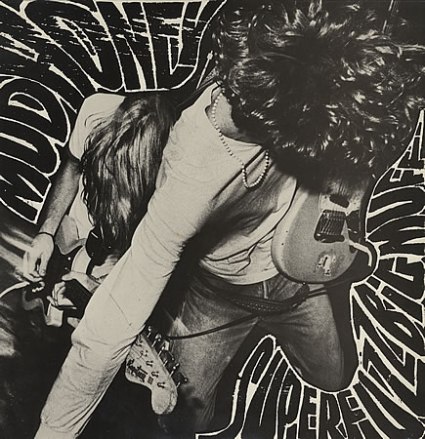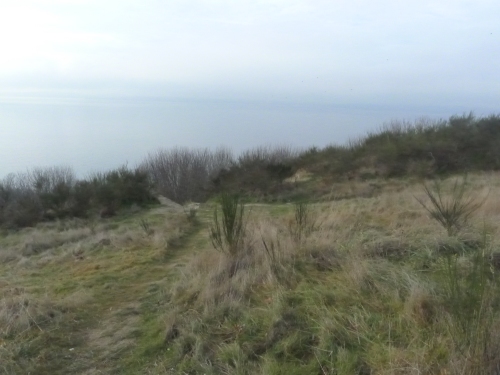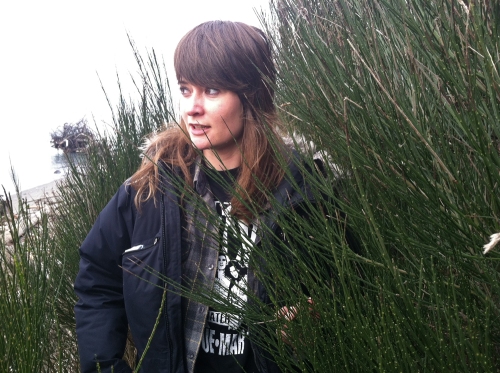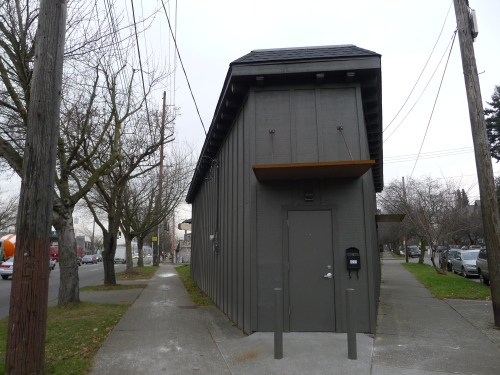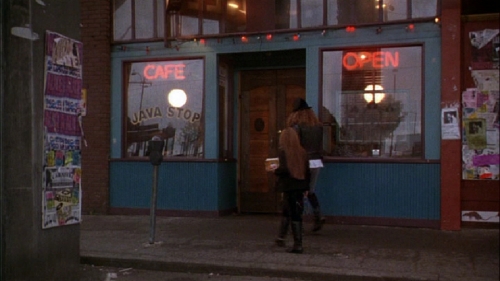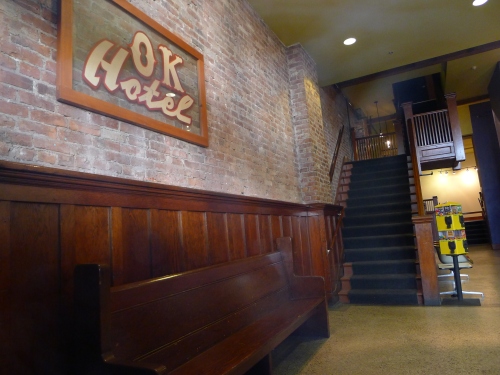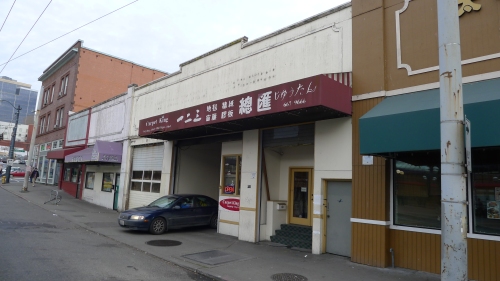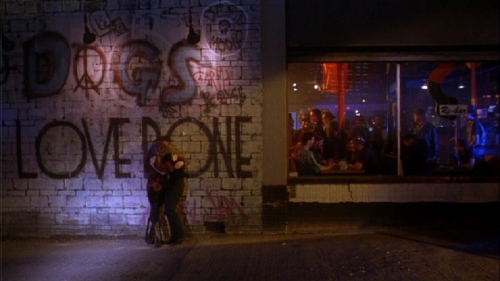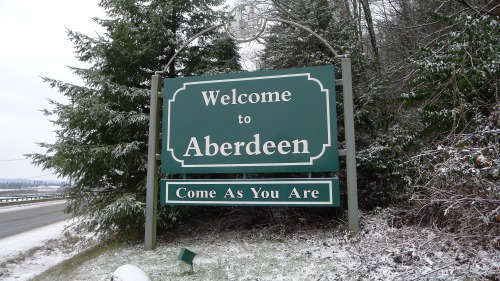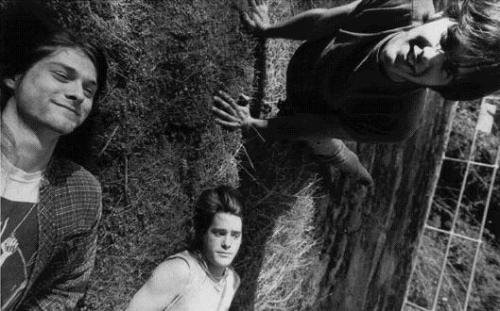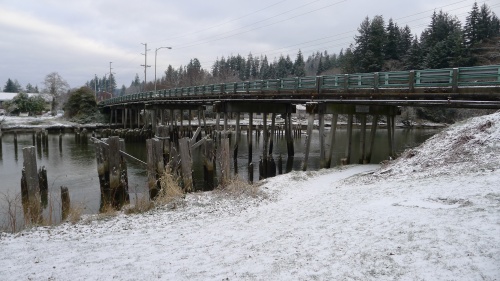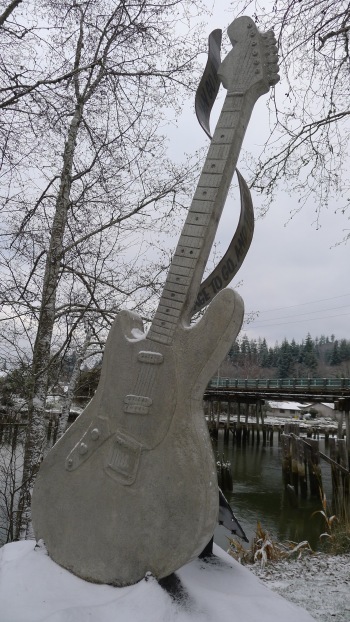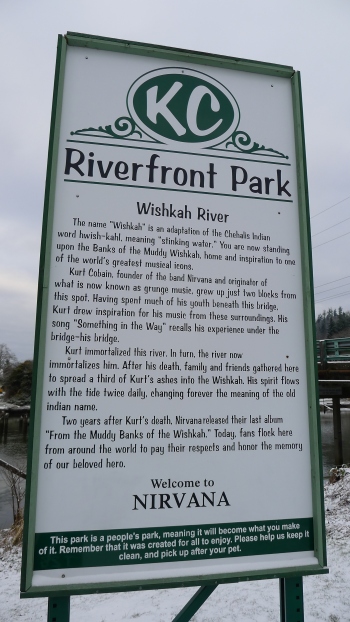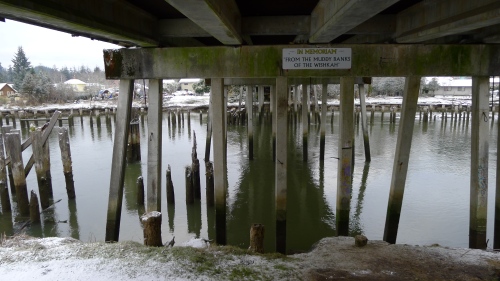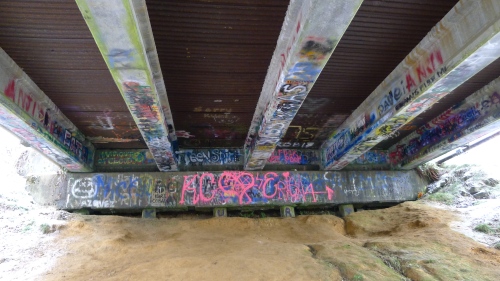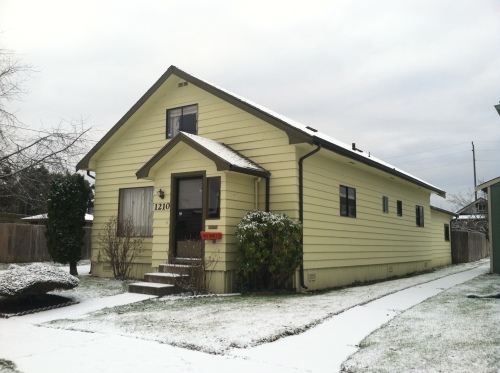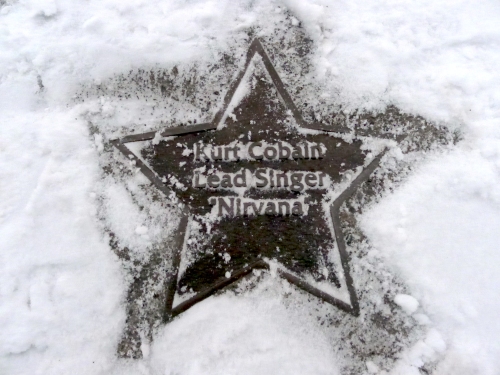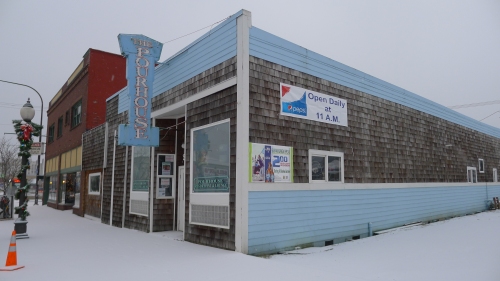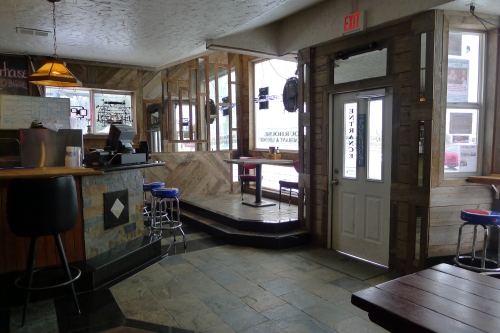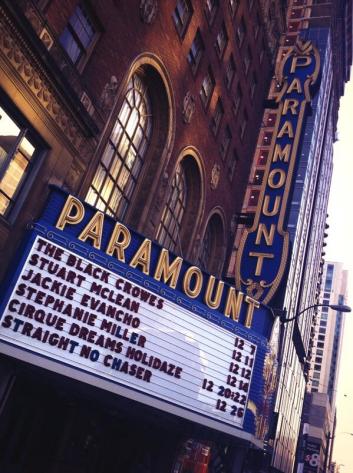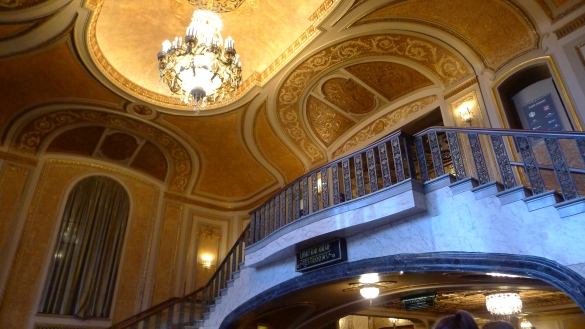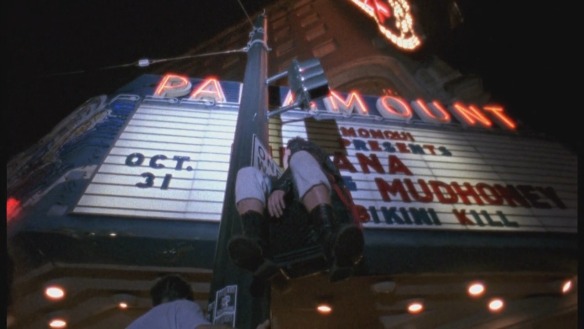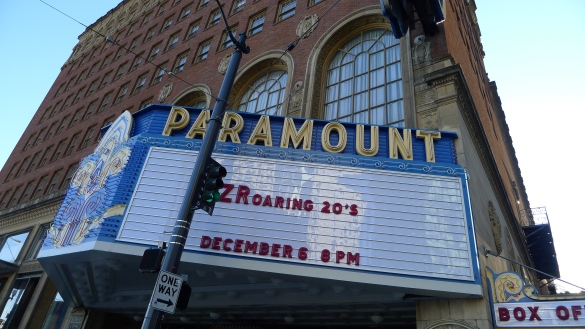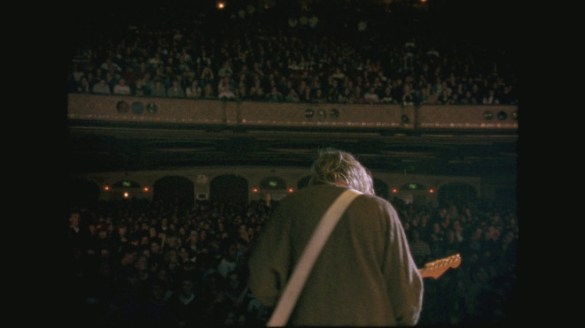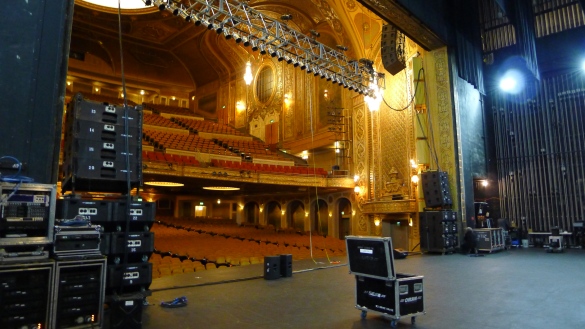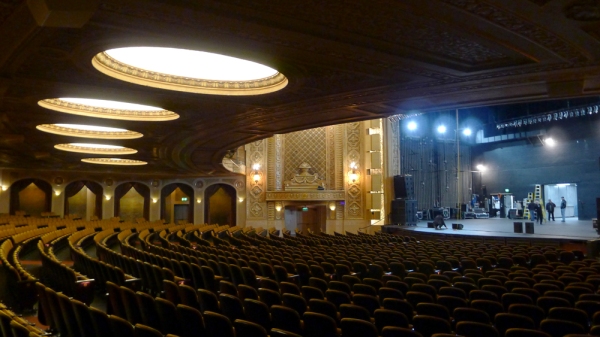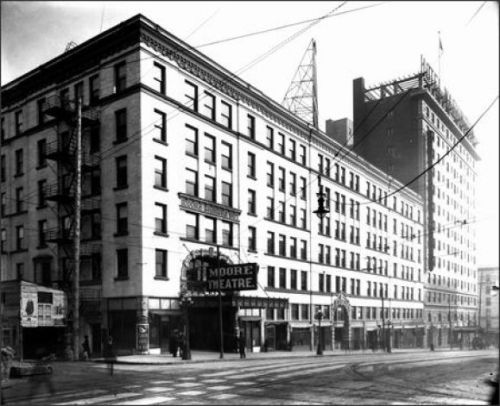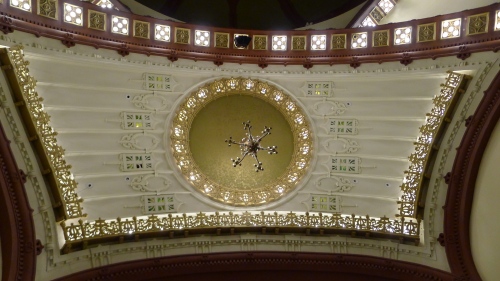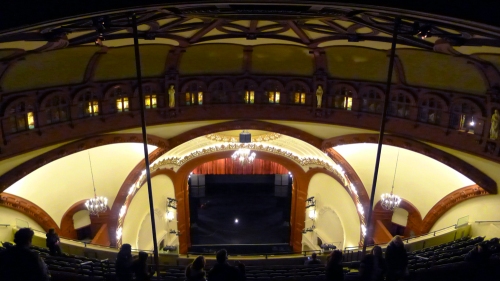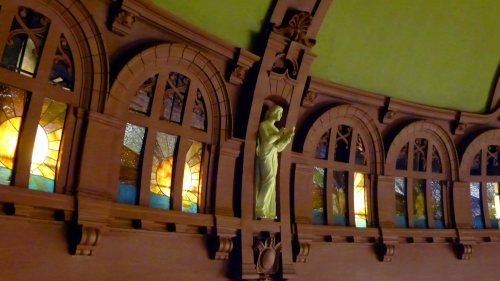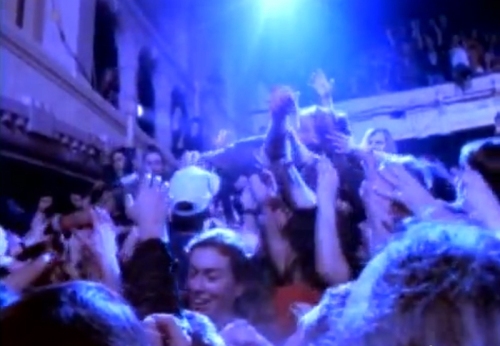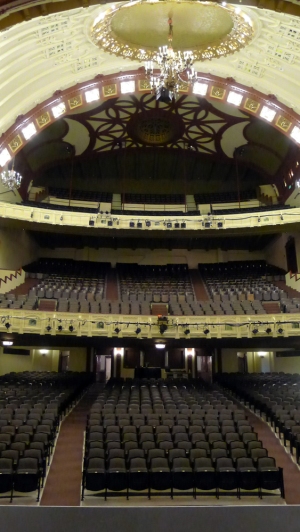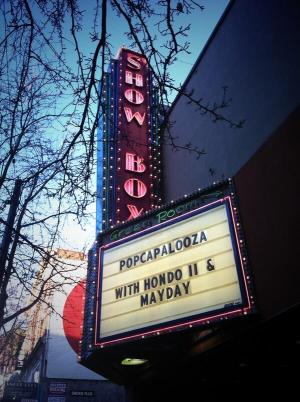On the way back to Seattle, I found out I’d missed a reading with Bruce Pavitt, co-founder of Sub Pop, at Fantagraphics Bookstore with a gallery of grunge luminaries in attendance. Tad Doyle, Mark Arm, and Charles Peterson were on hand to celebrate the release of Pavitt’s book, Experiencing Nirvana: Grunge in Europe, 1989. As a fan of the music of these bands and the photography of Peterson, I wanted to stab myself for missing this event. But I was rewarded with a pretty decent consolation prize when I woke up the next morning and found out Mudhoney was performing a “secret gig” at an ice cream shop that night. I notoriously miss stuff like this. I could not believe my luck. Actually, I kind of didn’t want to believe it–the thought of seeing Mudhoney in a tiny, up-close environment sounded way too good to be true. I mean, this was classic Seattle story in the making. The way these bands were intended to be seen—in a tiny, grimy venue, screaming in your face.
The only way to preoccupy my hopes of seeing Mudhoney up close was to continue my self-guided tour of all things grunge. The husband and I kicked off the day with a revisit to Discovery Park, the filming location for Temple of the Dog’s “Hunger Strike” music video. This time, we took the entire trail to the beach for a better look at the landscape. I even pinpointed the patch of tall weeds that famously dwarf Eddie Vedder at the beginning of the video (It’s aaaaalllll the way at the end of the trail and then up the beach near some interesting piles of driftwood.). Because I’m a nerd. Like there’s any point in denying this. I may have even tried a burrito at Taco Time because it’s mentioned as a certain musician’s biography. Even Seattle’s fast food is better. What’s up with that?

A sea lion barked at us from the water while we were down by the lighthouse. He must’ve been goin’ hungry.
Next on the agenda was a trip to the former site of Reciprocal Recording. A strange little wedge-shaped building on the edge of a neighborhood, this windowless phenomenon was once owned by Chris Hanzsek and Jack Endino. The studio hosted a number of local bands, including Soundgarden, TAD, Green River, and Mudhoney. Superfuzz Bigmuff was recorded here, as well as Mother Love Bone’s initial 8-track demos. Reciprocal is where Nirvana recorded their demo tape with Jack Endino, which was then sent to Sub Pop. Formerly Triangle Records (and before that, Triangle Grocery), the once-yellow building is now painted brown and recently housed Chris Walla’s Hall of Justice studio.
Of course, my tour of 90s Seattle wouldn’t be complete without a stop at the OK Hotel. This building is truly the stuff of legends. Now an apartment building, the OK Hotel was once a bar and music venue that hosted everybody who was anybody in Seattle’s emerging music scene in the late 80s and early 90s. Mudhoney, TAD, Soundgarden, Mother Love Bone, and Soundgarden all played here. It holds the distinction of being the venue where Nirvana first played “Smells Like Teen Spirit” live. You also might recognize this old building as the coffee shop in Cameron Crowe’s Seattle-centric film, Singles. In 1997, the Queens of the Stone Age played their first show here; four years later, the OK Hotel would end its days as a music venue after a 6.8-magnitude earthquake damaged the building and it was bought by redevelopers. I was very happy to see the new owners took care to restore the building and maintain the integrity of Seattle’s historic downtown.
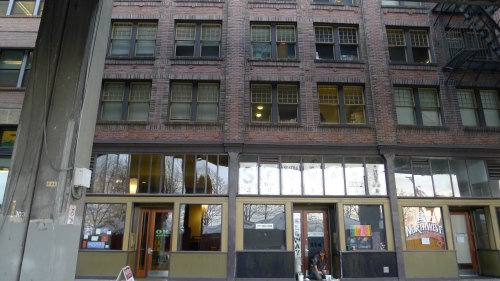
It’s really hard to take a picture of the whole building without getting hit by a car. Standing in a busy street here under an overpass, dodging traffic.
Not far away in Pioneer Square is the Central Saloon, interesting not only for its proclamation of being Seattle’s oldest bar in town (Technically, it’s not.), but also for holding Mother Love Bone’s final show. Take a peek inside its cramped quarters and you can better appreciate how the band was only on the verge of breaking out before Andy Wood’s untimely death.
Next, I made a point to see the former location of the infamous Gorilla Gardens in Chinatown. Now a faceless carpeting business, the white building used to house some of the wildest shows in the city. This nefarious underground club saw a ton of police intervention before it was closed down, and saw the likes of the Fastbacks, the Circle Jerks, Hüsker Dü, Sonic Youth, the Melvins, the U-Men, Green River, and Guns ‘n Roses. If you have never heard of this short-lived, crazy-ass club, look into it, if only for the Butthole Surfers chainsaw fire escape story.
Of course, we weren’t leaving Seattle without seeing the Coryell Apartments in Belltown. Pray tell what is the significance of this U-shaped building? You tell me if this looks familiar.

The fountain in the courtyard was added for the movie, but otherwise the apartments have barely changed since Singles was filmed here.
There were two more places of significance I wanted to see before we ended our self-guided tour. The first was the Re-bar, where Nirvana was kicked out of their own release party for “Nevermind” after starting a food fight. Re-bar used to feature one of Seattle’s Mother Love Bone’s murals, which is also featured in Singles.
Even though it doesn’t offer up much aesthetic value, I really wanted to see the Motorsports International Garage. On September 22, 1990, Nirvana played what was then their largest audience ever—15,000—and a dude named Dave Grohl was in the crowd that day. He ended up behind their drum kit three days later. Many see this high-octane show as the turning point of the band’s career.
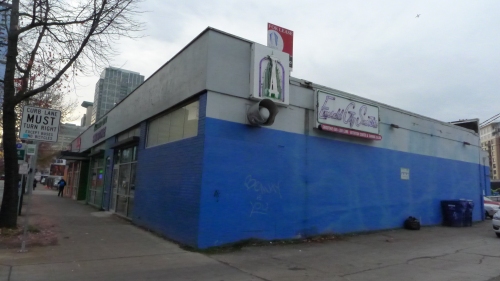
I couldn’t find out if this is the original building, but this is at least the address for the Motorsports International Garage where Nirvana played.
After another day filled with musical tourism, we headed over to Full Tilt Ice Cream, where I came an inch away from being permanently known as “Bass in the Face.” But that deserves its own post.

